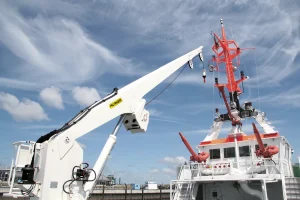Transporting seedlings is a delicate process that requires careful planning and attention to detail to ensure their survival and health during transit. This guide highlights the crucial considerations an Expert in Seedling Transportation must take into account to guarantee successful transit.
Environmental Control
Temperature and Humidity Management
Maintaining optimal temperature and humidity levels is paramount. Seedlings are highly sensitive to their environment; thus, temperatures should generally remain between 10°C and 25°C, with humidity levels around 75% to 85%. These conditions prevent the seedlings from drying out or succumbing to cold stress.
Ventilation
Proper ventilation is crucial to avoid the buildup of ethylene gas and other harmful compounds that can damage seedlings. Transport vehicles must have systems in place to ensure a steady exchange of air without creating drafts that could desiccate the young plants.
Packaging and Handling
Protective Packaging
The choice of packaging material can significantly impact the survival rate of seedlings during transport. Biodegradable pots or specially designed seedling trays that provide adequate support and prevent damage are essential. Additionally, cushioning materials may be necessary to protect seedlings from physical shock.
Loading and Unloading Techniques
Efficient and gentle loading and unloading techniques are vital to minimize stress and physical damage to the seedlings. Manual handling should be as minimal as possible, utilizing tools and machinery designed for delicate operations.
Logistic Planning
Route and Timing
Selecting the most direct route and avoiding traffic congestion can significantly reduce transit time and stress on the seedlings. Planning transportation for cooler parts of the day or overnight can help in maintaining optimal environmental conditions.
Speed and Efficiency
The speed of transit is crucial; faster transportation reduces the time seedlings spend in potentially harmful conditions. However, this must be balanced against the risk of damage from excessive speed or rough handling.

Economic Considerations
Cost
Transporting seedlings efficiently requires investment in specialized equipment and materials. The cost of temperature-controlled vehicles, high-quality packaging materials, and fuel must be balanced against the value of the seedlings being transported. For high-value crops, investing more in transport can be justified by the higher survival rate and better condition of the seedlings upon arrival.
Efficiency and Budget
Maximizing efficiency involves optimizing load capacity without compromising the health of the seedlings. This requires precise calculation of space requirements, considering the size and shape of the packaging. Budget considerations will influence the choice of transport mode, route, and timing, with a focus on minimizing costs while ensuring the safety and health of the seedlings.
Conclusion
For an expert in seedling transportation, success hinges on meticulous attention to the details of environmental control, packaging, handling, and logistic planning. Economic considerations also play a significant role, necessitating a careful balance between cost, efficiency, and the well-being of the seedlings. Achieving this balance ensures the safe arrival of healthy, vigorous seedlings ready for planting.